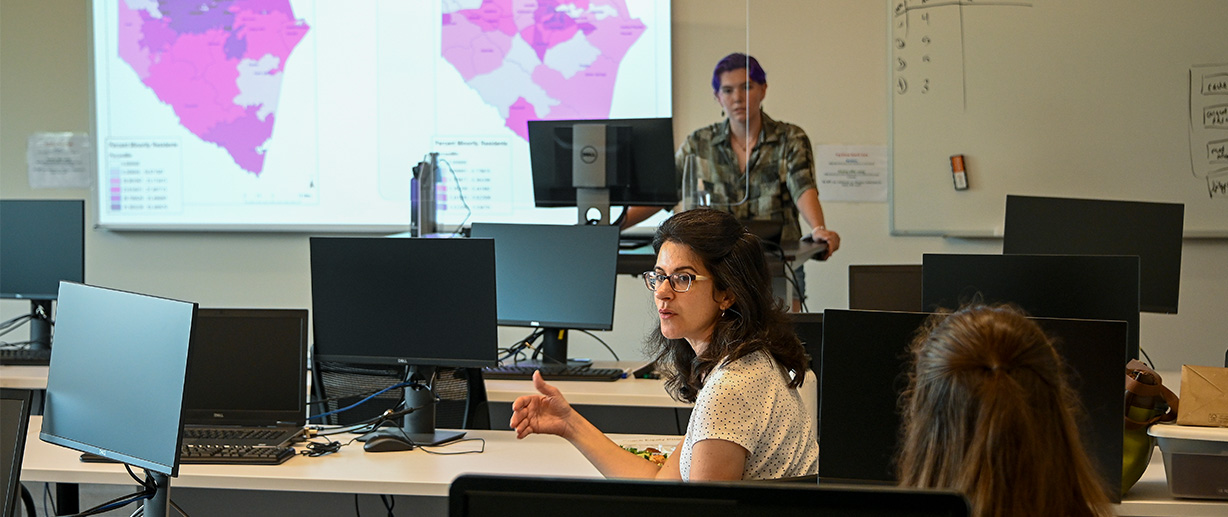By Robert W. Dalton
During a walk around Duncan Park in the spring of 2020, Dr. Laura Barbas Rhoden and Dr. Jennifer Bradham talked about greenspace equity in Spartanburg County. Their conversation eventually turned into a joint research project.
Barbas Rhoden, Bradham and a group of students examined the number of greenspaces, their locations and their amenities. They also looked at demographic data associated with park locations and the frequency of use. Bradham’s group researched the parks through a quantitative lens, while Barbas Rhoden’s students took a qualitative view.
Bradham, assistant professor of environmental studies, and her students identified and assessed 76 greenspaces within the county. Drew Wilson ’23, an environmental studies major from Sandersville, Georgia, mapped the parks and their locations using Geographical Information Systems (GIS).
“That sounds like a big number, but there is a high concentration in the city,” says Wilson. “There aren’t as many out in the county. It’s interesting how they are dispersed.”
The parks were mapped by ZIP code and by census tract. The differences were glaring.
“We identified a lot of park deserts,” says Wade Wood ’22, an environmental studies major from Garner, North Carolina. “When looking at them at the ZIP code level it’s not as apparent, but when it’s broken down by census tract, you see a lot of areas outside of the city of Spartanburg where there are large swaths of land that don’t have any parks.”
The research showed that census tracts with the highest concentration of Hispanic and Latinx residents have no parks.
“There’s one park on the border of a census tract, but it’s difficult to access in a car and dicey to access on foot,” says Barbas Rhoden, professor of Spanish. “We know from census data that Hispanic and Latinx populations in the county trend young, so that likely means there are a fair number of children and young adults without access to nearby play areas that are parks.”
Bradham’s students used cell phone tracking data to study park usage, but that wasn’t always accurate. The data suggested Arkwright Park received very little use. When the students visited, they found a different story.
“It’s actually used all the time, but it’s used by children or underage people who wouldn’t necessarily have a cell phone,” Bradham says. “We only knew that because of the qualitative side of the project.”
Students made observations at 29 parks throughout the county in June and July. They also interviewed people at the parks, neighborhood residents and community leaders about how they experience parks and what they value.
“There’s a lot of appreciation for destination parks in comparison to neighborhood parks,” says Paola Cruz ’23, a Spanish and sociology and anthropology double major from Charlotte, North Carolina. “Cleveland and Airport parks have certain amenities that others don’t have, like water access. Cleveland Park has a toddler section and a big kids’ section. We were able to grasp specific details about what people liked and what they wanted.”
Barbas Rhoden expressed appreciation for everyone who assisted in the project.
"The research team wishes to thank community context experts Nora Curiel-Muñoz, Angelia Edwards and Toni Sutton, and all who shared insights and data for this study,” she says.
The groups presented their complete findings at the Southern Conference Undergraduate Research Forum in October, and Bradham says there’s more work ahead.
“It’s not just one and done,” she says. “We’re hoping to give a voice to people who want change but maybe don’t have the data or resources they need.”
